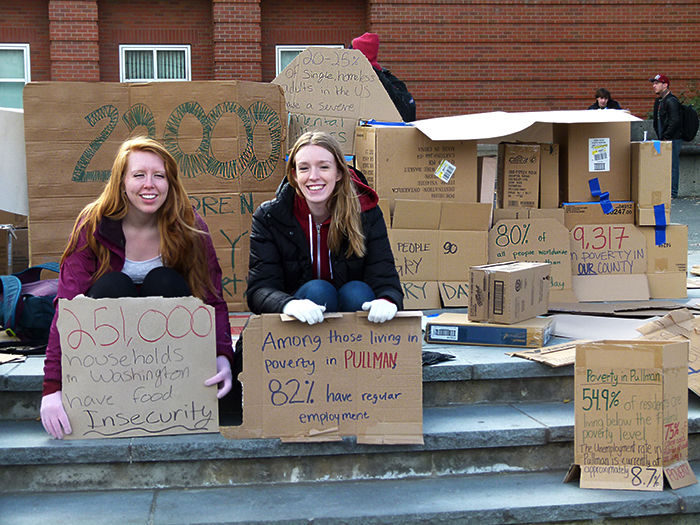Whitman County has highest poverty rate in the state
November 16, 2016
Whitman County has the highest poverty rate in the state, according to the 2015 Community Needs Assessment. About 13,000 of Whitman County’s nearly 40,000 residents lived in poverty in 2013, of which about 11,000 were in Pullman.
About 45 percent of Pullman residents live below the federal poverty line, while the statewide rate is about 13 percent. The Community Needs Assessment, using U.S. Census Bureau data, stated that this is largely due to the number of college students living off-campus. Excluding these students reduces the poverty rate for Pullman to about 21 percent and for Whitman County to about 17 percent, only four percent above the state average.
These students have a different poverty experience than the rest of the county, the assessment noted, suggesting they may have very different needs than other impoverished people in the area.
The assessment added that this does not discount the negative impacts of poverty on all people, college students or not. For example, female-headed households and seniors are more vulnerable to being in poverty, and Pullman has a high concentration of residents over 65.
Throughout the week, the Center for Civic Engagement (CCE) is working with student groups, community organizations, university departments and city departments to host events for Poverty Awareness Week.
“Poverty is one of those issues we just don’t think about a lot if we don’t see it directly,” said Erin McIlraith, marketing and communication coordinator at CCE.
McIlraith said understanding what it looks like and where it comes from are important steps in fighting poverty in the community and worldwide. When people think of poverty, they think of the stereotype of someone living on the street, McIlraith said. But it is different in rural communities like Whitman County and college towns like Pullman.
Rural residents often face limited access to education, transportation, healthcare and fresh food from grocery stores, she said. The Community Needs Assessment listed transportation and access to nutritious food as two of Whitman County’s most pressing needs for low-income people.
People in these areas also struggle with unemployment and underemployment because there are few full-time job opportunities offering benefits. However, the unemployment rate in Pullman in 2015 was 4.2 percent, the lowest it has been since 2008.
Barb Mays, the family services manager for the Community Action Center in Pullman, which provides emergency services to low-income people, cited lack of living-wage jobs and affordable housing as the main causes of the county’s high poverty rate.
Housing costs tend to be higher in Pullman than elsewhere in the county due to the university, Mays said, and this forces people to find more affordable housing farther from their jobs in Pullman, which adds a transportation cost of $200-$300 a month.
“Having a healthy job market is probably the best way to address poverty needs,” Mays said, “and affordable housing makes a big difference.”
Many students are living in poverty, she said, especially those trying to go to school with families. She said that low-income families have to put a large portion of their earnings toward necessities.
“They’re still faced with those same issues of having enough money to meet their basic needs,” she said.



















